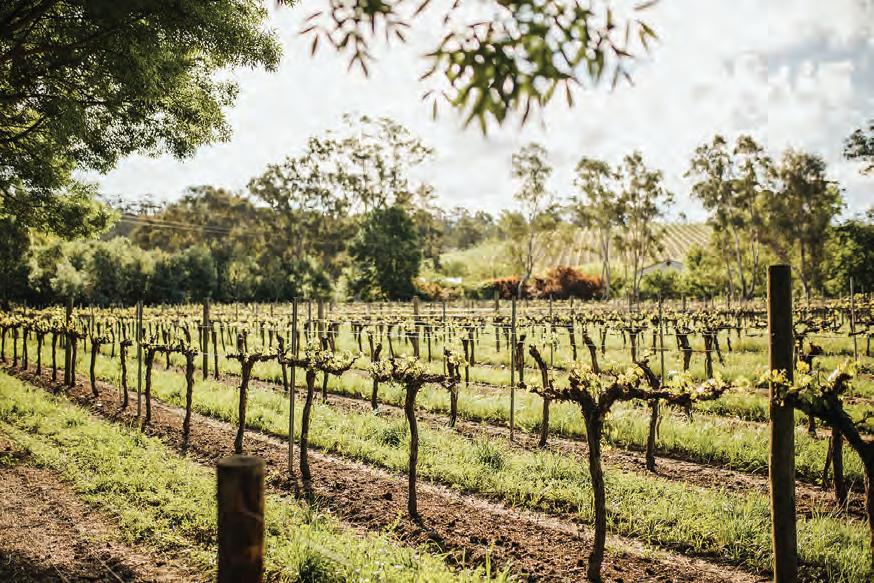
4 minute read
Champagne and Sparkling, Ken Gargett
Bursting Bubbles
HAS THE BUBBLE BURST? IS THE SPARKLING STALE? HAS THE FIZZ GONE FLAT? NO ONE IS UNDER ANY ILLUSION AS TO WHAT A HORRENDOUS YEAR 2020 HAS BEEN, THOUGH THE TROUBLES FACING CHAMPAGNE, AND SPARKLING WINES IN GENERAL, MAY BE LESS FRONT OF MIND FOR MANY. AND THAT IS A LARGE PART OF THE PROBLEM.
Advertisement
Words Ken Gargett
Champagne is the ultimate celebration wine and there has been precious little to celebrate. That will turn, of course, but who knows when. For the moment, the world is not turning to champagne to sooth its woes.
Consequently, many of the producers are hurting. Sparkling wines are not the sort of thing one sits at home, lockdown or not, and opens for dinner, as one might a white, red or even enjoy a beer or a glass of spirits. Not fizz.
A quick look at the doom and gloom spread across the internet, shows the widespread problems the region is facing. “Champagne Losing its Fizz as Global Pandemic Clobbers Sales”. “As Champagne Sales Plummet, more than 100 Million Bottles are Expected to Go Unsold”. “As Champagne Sales Plummet, Producers May Throw Away Tons of Unused Grapes” – it would seem headline writers are set in their ways. “The Era of Grower Champagne is Over”. “Champagne agrees Dramatic Yield Reduction for 2020”. “Champagne Pushed into Uncharted Territory”. And many more. Not inspiring stuff, but it reflects the difficulties with which Champagne Houses must deal.
Just as the last couple of months of 2020 have finally offered glimpses of hope for the world – vaccines, elections (well, some of them) – so too, we might be turning the corner for this wonderful wine. And sparklings in general.
Sales exploded over the latter part of the year, led by big increases in France. Unable to travel the globe, the French explored their own country and drank their own fizz. The inability to travel has assisted Champagne sales in many markets. People have more money to spend on luxuries (and who doesn’t want/need something/anything to make them feel a little better at this time?). Champagne has benefited from that.
As countries pushed through the first wave of the virus, sales also began to recover as people tried to return to their old lives. Unfortunately, Europe is suffering increased infections and the USA is in a similar position. Lockdowns in Europe will surely see that recovery take a hit, but it provided an indication that when we are finally through the worst of this, we can expect that once again, people will look to sparklings (and celebrating the end of this horror with a top fizz seems the ideal way). Reports of the demise of fizz are, as they say in the classics, somewhat premature.
Of course, there are more issues facing Champagne than simply the virus. What

is likely to have a much more important impact over the coming decades is climate change – yet another issue that the planet has been able to politicise. Ask a champagne maker, or for that matter, any winemaker, and climate change deniers can sit in the same corner as the flat earth brigade. 2020 is a prime example of where we are headed. Remember that for ages, we expected around three, maybe four, declarations a decade, because the climate would not allow more. These days, a nondeclared year is becoming very much the exception. That is the silver lining. The issue will be what are the wines like. Will they be champagne as we know it?
Go back to the horribly hot year of 2003 and we saw some very average champagnes at best (despite what some Houses will tell you). There have been suggestions of 2020 being a similar year (please not, although I would find the lower levels of acidity worrying). There are also early reports that it might be a terrific vintage, if much reduced (one of the lowest yields this century). If 2020 does match positive expectations, it seems we will have the finest trilogy of vintages – 2018, 2019 and 2020 – since the legendary trio of 1988, 1989 and 1990. That can only be good for the future of the region as though wines are yet to see the light of day.
The reduction was partly due to the CIVC limiting the harvest to 8,000kg/ ha for the entire region, and providing no allowance for extra grapes to be picked for wines to be put into ‘reserve’. It meant that this year’s harvest was 25% below 2019, itself down more than 10% on recent levels. 2020 was also a small harvest naturally.
Harvest, set by the CIVC, began 17th August, although some began several days before that, making it the earliest harvest by almost a week. Previously, the record was held by 2018, a vintage which has the makers thanking the heavens for what should be quality to match years like 2008 and 2012. 2020 was the sixth time this millennium that the harvest has begun in August – previously 2018, 2015, 2011, 2007 and 2003. Prior to that? 1822.
Sparkling wine and champagnes will face these and other issues in the coming years. There will be recoveries and other periods where sales struggle, but expect these wines to recover and thrive as they have always done. And as it has for some time, expect ever-increasing quality.
Something to which everyone can raise a glass.











